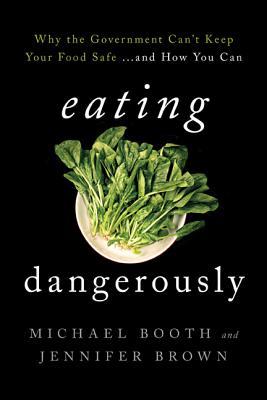Last month, when I went to pick up my Skagit River Ranch Buyers' Club order, the club host offered me a couple packages of their so-tasty Andouille Sausage. The packages were originally for a restaurant delivery, but they hadn't sealed to Skagit's satisfaction (the sausages were "loose" in the packaging, instead of bound airlessly to the plastic walls), so they offered them to us. Did I take 'em? Are you kidding? Since I had no plans to eat them raw, I was all over that deal.
 |
| Photo from Southernfood.com |
And am I ever glad I did. Twice I've made this Southernfood.com recipe and we've scarfed it down.
Spicy Sausage and Penne Casserole
- 8 ounces mini penne pasta or elbow macaroni
- 12 to 16 ounces smoked andouille sausage, thinly sliced (I used 3 links of Skagit Andouille)
- 1/2 cup chopped onion
- 1/2 cup chopped red or green bell pepper (I omitted this, to spare the kids picking it out)
- 2 tablespoons butter
- 2 tablespoons flour
- 1 1/2 cups milk
- 2 cups shredded Cheddar cheese
- 1 teaspoon Creole seasoning (I substituted a little garlic powder, paprika, a smidge of cayenne)
- salt and pepper, to taste
- 1/2 to 1 cup soft fine bread crumbs tossed with 2 to 3 teaspoons melted butter
Preparation:
Cook pasta following package directions; drain, rinse, and set aside.
In a large saucepan or skillet, cook the andouille sausage with onion and bell pepper until onions are translucent. Remove the sausage mixture to a plate and set aside.
Heat oven to 350°. Lightly grease a 2-quart casserole or spray with nonstick cooking spray.
Melt 2 tablespoons of butter in the same skillet over medium heat; stir in flour until blended. Gradually add the milk and Creole seasoning. Cook, stirring constantly, until thickened. Add the cheese and stir until melted. Taste and add salt and pepper, as needed. Stir in the drained pasta and sausage mixture. Spoon into the prepared casserole. Sprinkle bread crumbs over the top of the casserole.
Bake for 30 minutes, or until topping is browned and casserole is bubbly.
Serves 5 to 6.
*****************
Clearly I don't tend to be a food safety alarmist--our family applies the 10-second rule to food fallen on the floor, and produce never gets more than a quick rinse in the tap, so I was curious to read EATING DANGEROUSLY: WHY THE GOVERNMENT CAN'T KEEP YOUR FOOD SAFE...AND HOW YOU CAN by Michael Booth and Jennifer Brown. (Note: I received this book as an e-galley from the publisher.)
Would I recommend it? Well, I thought it was a great read, but I wouldn't hand it to the OCD friends and family in your life if you ever wish to experience a sane moment sharing a meal with them again. If they, too, apply the ten-second rule and would leap on free sausage from a trusted provider, however, they should be
able to enjoy this book without t-o-t-a-l-l-y f-r-e-a-k-i-n-g o-u-t. Bottom line: most likely, at some point, we might get sick from our food, but since we no longer have tiny kids or pregnant women at home, and are not yet old and in the home, I'm not going to sweat it.
Plants and animals get plenty of exposure to bacteria and feces and just plain dirt, so unless you're going to switch to only hydroponically-grown produce and abstain from meat and seafood, there will always be risk involved. Organic foods spare you the pesticides, but not necessarily the other hazards. If you are the freak-out type, the authors have plenty of tips on produce-scrubbing and meat thermometers and refrigerator optimization and such that you will find helpful. (I skimmed this bit because of my negligent attitude mentioned earlier.)
They cover some of the worst food-illness scares in recent history, including Colorado canteloupe and California spinach and southern peanuts, and discover the government does not have the manpower or the funding to keep our food supply safe. Neither consumers nor grocery stores nor producers want to pay for the safeguards either, so that throws us back on the home techniques.
The book may make your more likely to purchase your bagged spinach from Earthbound Farms, however, as they made big changes after their e Coli scare and now do test-and-hold before any of their spinach goes to market. Not as fresh, perhaps, but if you were buying bagged spinach in the first place, that wasn't a huge deal to you. And this way you at least won't spend a day hunched over a toilet.
Most new and interesting to this reader were the discussions of Chinese food adulteration/contamination and the multitude of foreign imports (including spices) which are completely beyond our FDA's ability to track, test or regulate.
So are there any advantages to eating local and organic? Booth says, "Eating healthy, or organically, or locally, has its benefits--fewer pesticides, more humane treatment of animals, less fossil fuel burned to transport the bananas from Chile or the hamburger from who knows where--but it has not been found to reduce the risk of foodborne illness." That is, all cows still poop, whether the feedlot variety or the idyllic pasture-dwellers. And all plants still grow in dirt, where a bird might fly overhead and poop on it. Poop happens. But--and Booth never says this explicitly--some giant risks can be eliminated by buying our food carefully from farmers we trust. We can ask our fishermen, "Are these salmon wild, or were they raised like Chinese farmed tilapia and fed shovelfuls of pig and goose feces?" Or, "Tell me about how you raise your cattle," rather than eating hamburgers like Booth describes, "a don't-ask-don't-tell compilation of beef leftovers shaved from higher-quality cuts of meat in slaughterhouses ranging from Uruguay to Canada."
All in all, a recommended read for those interested in our nation's food supply. May 2014 be a GI-Distress-Free year for you!



